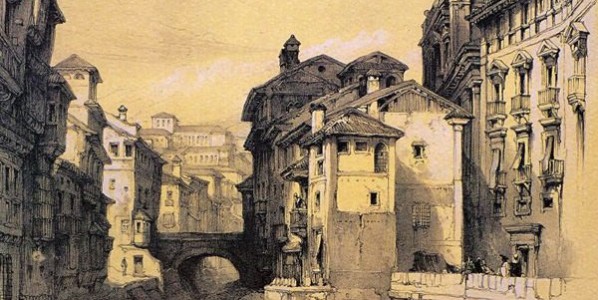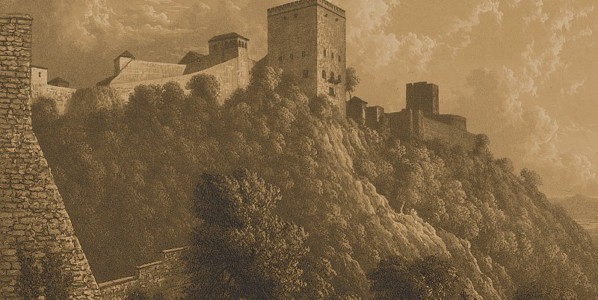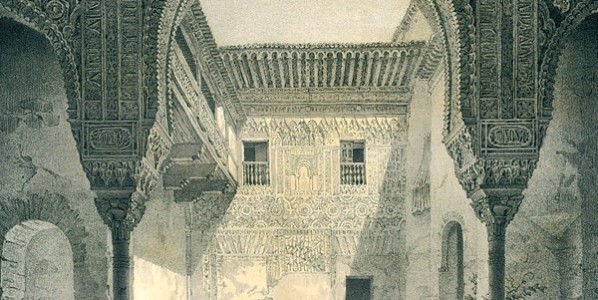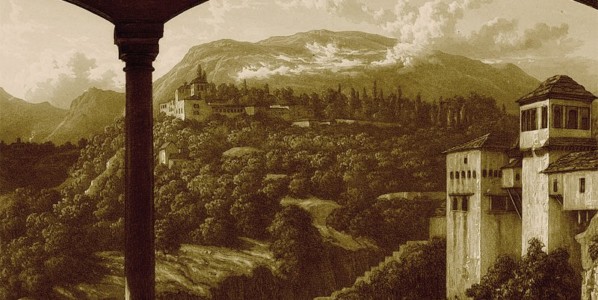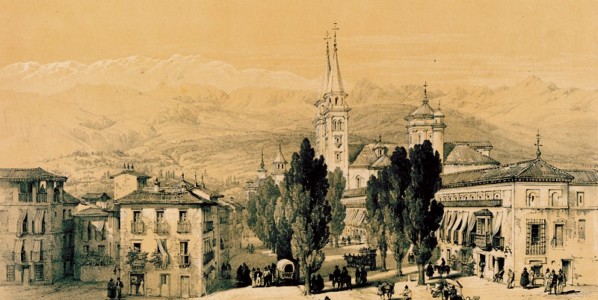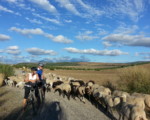 The Carrera del Darro could be one of the most beautiful urban streets in the world. It is completely unique. The Darro River is small, but it has brought life to Granada through the ages, its many bridges uniting the city’s two magical hills (on which the Alhambra and Albayzín are built). Granada’s palaces, houses and arable land have taken water from the Darro since time immemorial, and its waters have, in turn, carried away the pains and impurities of a city object of continuous construction and destruction (as Juan Ramón Jiménez clearly saw in his poem Reino de la polilla – “kingdom of the moth”) The river and its music have been loyal companions to residents and visitors alike as they approach the heart of Granada and walk along the Paseo de los Tristes .
The Carrera del Darro could be one of the most beautiful urban streets in the world. It is completely unique. The Darro River is small, but it has brought life to Granada through the ages, its many bridges uniting the city’s two magical hills (on which the Alhambra and Albayzín are built). Granada’s palaces, houses and arable land have taken water from the Darro since time immemorial, and its waters have, in turn, carried away the pains and impurities of a city object of continuous construction and destruction (as Juan Ramón Jiménez clearly saw in his poem Reino de la polilla – “kingdom of the moth”) The river and its music have been loyal companions to residents and visitors alike as they approach the heart of Granada and walk along the Paseo de los Tristes .
From there you can head up Cuesta del Chapiz hill to the Albayzín or Sacromonte, or up Cuesta de los Chinos hill to the Alhambra and Generalife, or you can drink from the Valparaíso fountains, following the path taken so many times by Angel Ganivet and his friends from the Avellano Fountain Brotherhood, a path that has always been an inspiration for literature and for love of the city.
The river has helped mould the city over the ages and has been vital for a whole range of professions: farmers, craftsmen, poets, even frenzied gold-hunters who, infected by the Californian gold fever of 1849 and by a general resurgence of mining practices, took deliriously to washing the legendary sands of Granada’s “Dauro” (River of Gold) in 1850.
The Darro River has its source in the mountains to the northeast of the city at the so-called Teja Fountain. It first enters the city when it glimpses the Generalife gardens from Jesús del Valle district. From then on it shares out its valuable water amongst the houses and vegetable gardens beneath Sacromonte Abbey, thus creating the Valparaíso neighbourhood.
Finally, once passed the Aljibillo bridge, the river is briefly dressed up as it runs down the Carrera from Paseo de los Tristes to end up in Plaza Nueva. There, having passed the Cadí bridge, it disappears into a subterranean channel constructed in 1835. Many Granadinos, Ganivet included, would have preferred the river to run its natural course.

